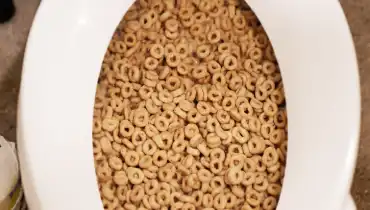We have stumbled upon the article involving What Can Happen If You Flush Food Down the Toilet? directly below on the net and figured it made good sense to discuss it with you on my blog.

Introduction
Many individuals are often confronted with the issue of what to do with food waste, especially when it comes to leftovers or scraps. One usual question that emerges is whether it's okay to flush food down the commode. In this article, we'll look into the reasons that people could take into consideration purging food, the consequences of doing so, and alternate methods for correct disposal.
Reasons individuals may consider flushing food
Absence of awareness
Some people might not know the prospective harm triggered by flushing food down the commode. They might erroneously believe that it's a safe practice.
Convenience
Flushing food down the toilet might seem like a quick and easy service to taking care of unwanted scraps, specifically when there's no nearby trash can available.
Laziness
Sometimes, people might just select to flush food out of large negligence, without thinking about the effects of their actions.
Repercussions of flushing food down the bathroom
Ecological effect
Food waste that winds up in rivers can add to air pollution and damage aquatic communities. Additionally, the water used to flush food can stress water resources.
Plumbing concerns
Flushing food can bring about blocked pipes and drains, causing expensive plumbing repairs and troubles.
Kinds of food that must not be flushed
Coarse foods
Foods with coarse appearances such as celery or corn husks can obtain tangled in pipes and create blockages.
Starchy foods
Starchy foods like pasta and rice can take in water and swell, resulting in clogs in pipelines.
Oils and fats
Greasy foods like bacon or food preparation oils should never be flushed down the toilet as they can solidify and trigger clogs.
Appropriate disposal approaches for food waste
Utilizing a garbage disposal
For homes geared up with garbage disposals, food scraps can be ground up and purged through the plumbing system. However, not all foods are suitable for disposal in this fashion.
Recycling
Specific food packaging materials can be reused, lowering waste and decreasing ecological impact.
Composting
Composting is an environmentally friendly way to get rid of food waste. Organic materials can be composted and made use of to enhance dirt for horticulture.
The significance of proper waste management
Lowering environmental harm
Proper waste monitoring techniques, such as composting and recycling, aid lessen contamination and preserve natural resources for future generations.
Shielding pipes systems
By preventing the method of flushing food down the bathroom, house owners can avoid expensive plumbing fixings and keep the honesty of their pipes systems.
Conclusion
In conclusion, while it may be appealing to flush food down the bathroom for comfort, it is necessary to understand the potential repercussions of this action. By taking on appropriate waste monitoring methods and taking care of food waste sensibly, individuals can add to healthier plumbing systems and a cleaner setting for all.
FLUSH FOOD DOWN THE TOILET?
FLUSHING FOOD CAN CAUSE BLOCKED DRAINS IN YOUR HOME
All of the plumbing fixtures in your home are connected to the same sewer pipe outside of your home. This outdoor sewer pipe is responsible for transporting all the wastewater from your home to the Council sewer mains. Even small pieces of food that go down the kitchen sink can cause problems for your sewer. It should therefore be obvious that flushing larger bits of food, such as meat, risks a clog in either the toilet itself or the sewer pipes. Flushing greasy food is even more problematic because oil coagulates when it cools, coating the interior lining of your pipes.
THE TOILET IS NOT A BIN
Food isn’t the only thing that people shouldn’t be flushing down the toilet. People use the toilet to dispose of all kinds of things such as tampons, makeup wipes, dental floss, kitty litter and even underwear. Water goes to great lengths to educate residents about the high costs and stress placed on wastewater treatment systems simply from people flushing the wrong stuff down the toilet. It costs taxpayers millions of dollars each year, and homeowners thousands in blocked drain repairs.
FLUSHING FOOD IS A WASTE OF WATER
Flushing food is a waste of our most precious resource - water. In June this year Level 1 water restrictions were introduced to protect water supply from drought conditions. Much of New South Wales continues to be affected by prolonged drought with recent figures revealing up to 97 per cent of the state remains in drought. Depending on whether you have a single or dual flush toilet, every single flush uses between five and 11 litres of water. In the current climate this is a huge amount of water to be wasting on flushing food that should be placed in the bin (or better yet, the compost).
https://www.jabplumbingsolutions.com.au/blog/can-you-flush-food-down-the-toilet

I am very involved in What Can Happen If You Flush Food Down the Toilet? and I hope you enjoyed reading the post. Enjoyed our post? Please quickly share it. Help somebody else check it out. I thank you for your readership.
Customer Reviews
Comments on “Is it Appropriate to Flush Food Down the Toilet?”